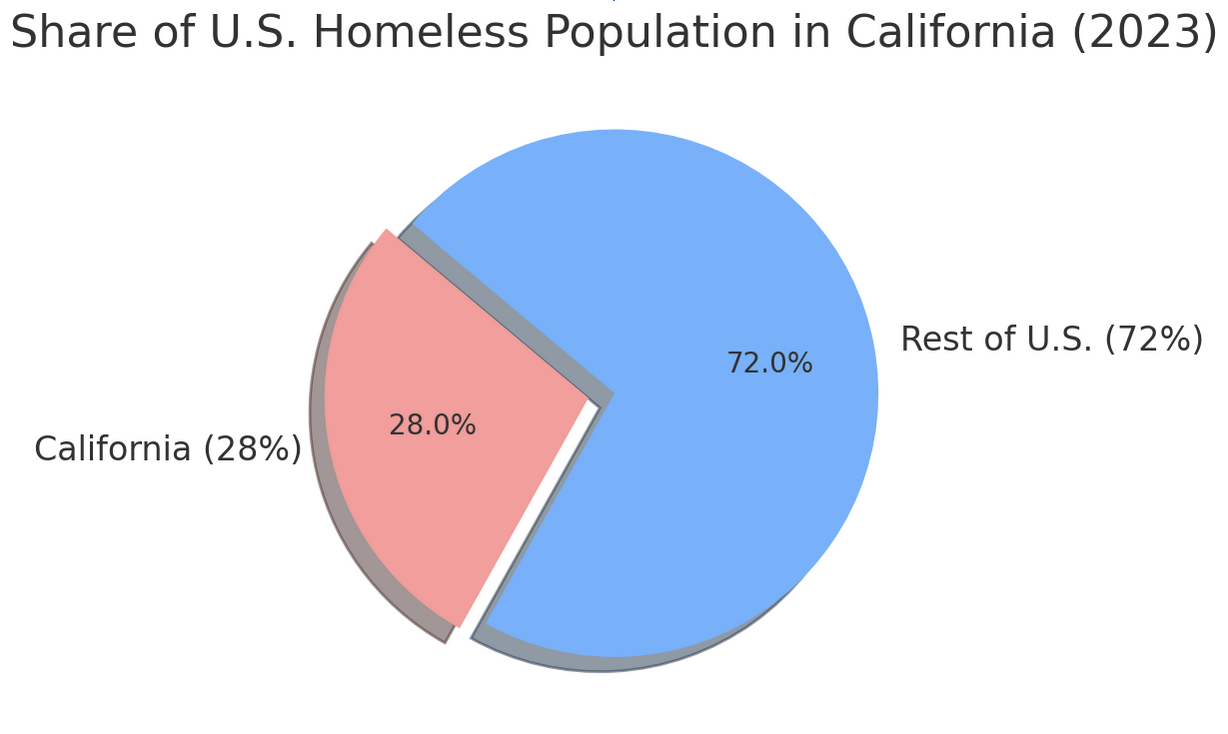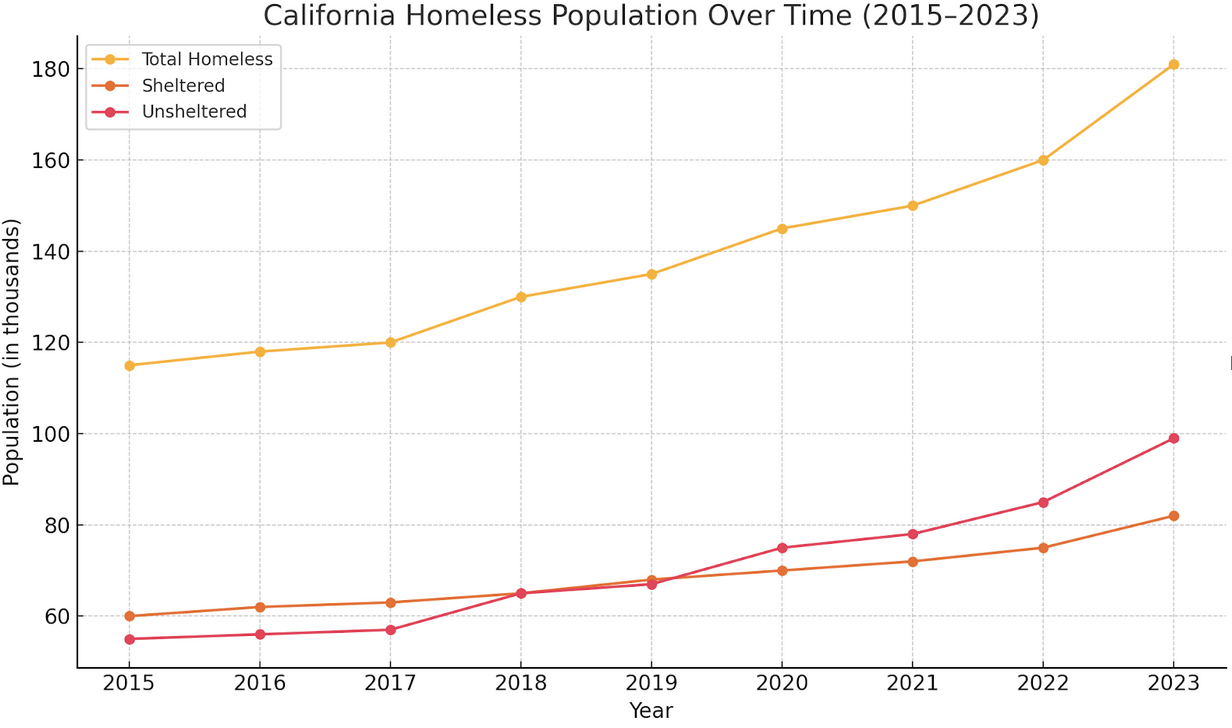Information & Resources
Resource Map
📊 California's Homelessness Crisis: A Statistical Outlier
California is home to over 28% of the entire nation's homeless population, despite only making up about 12% of the U.S. population. This disparity illustrates the severity and concentration of homelessness in the state.
🔢 Key Figures:
- Total Homeless Population in California (2023): ~181,000
- Total U.S. Homeless Population: ~653,000
- Percentage of U.S. Homeless in California: 28%+

🏙️ Homeless Populations by Major Cities:
| City | Estimated Homeless Population (2023) | National Rank |
|---|---|---|
| Los Angeles | ~71,000 | 1st |
| San Diego | ~10,000 | 5th |
| San Jose | ~7,200 | 10th |
| San Francisco | ~7,000 | 11th |
| Oakland | ~5,000 | 15th+ |
Many of these cities rank in the top 20 nationwide, making California home to more high-ranking homeless cities than any other state.

🏕️ Unsheltered Homelessness in California
California continues to lead the nation in unsheltered homelessness:
- 75% of individuals experiencing homelessness in California are unsheltered.
- Major California cities with high unsheltered rates:
- San Jose: 83%
- Los Angeles: 81%
- Sacramento: 77%
- Oakland: 76%
🧠 Why Is Homelessness So High in California?
Several key factors contribute to the state's disproportionate numbers:
1. Housing Affordability Crisis
- California has some of the highest rents and home prices in the country.
- Median rent for a one-bedroom apartment in cities like San Francisco or San Jose exceeds $2,500/month.
- Low-income residents are often rent-burdened, spending over 50% of their income on housing.
2. Insufficient Affordable Housing
- A shortage of nearly 1 million affordable housing units exists for extremely low-income renters in California.
- Long waitlists and underfunded housing programs delay access for those at risk.
3. Mental Health & Substance Use Gaps
- Many unhoused individuals experience untreated mental illness or substance use disorders.
- California's mental health infrastructure, while improving, has struggled to meet the scale of need.
4. Incarceration & Reentry
- High rates of incarceration and limited reentry support can lead to homelessness upon release.
- California's justice system reforms haven't fully addressed housing for people post-incarceration.
Sources
California State Senate Housing Committee. (2024, January). Homelessness in California 2023 Numbers. Retrieved from https://shou.senate.ca.gov/.../Homelessness%20in%20CA%202023%20Numbers%20-%201.2024.pdf
California Interagency Council on Homelessness. (n.d.). Homeless Data Integration System. Retrieved from https://bcsh.ca.gov/calich/hdis.html
U.S. Department of Housing and Urban Development. (2023). CoC Homeless Populations and Subpopulations Report: California 2023. Retrieved from https://files.hudexchange.info/reports/published/CoC_PopSub_State_CA_2023.pdf